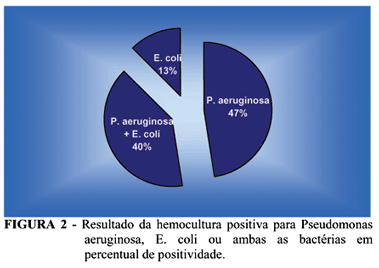PURPOSE: Observe the relation between small intestine's mucosal injury and bacterial translocation. METHODS: 50 adult female rats were distributed in 5 groups: 1. Control: intraperitoneal injection of Pseudomonas aeruginosa, 2. Drainage: intraperitoneal injection of P. aeruginosa and drainage of the abdominal cavity, after 6 hours, 3. Washed: intraperitoneal injection of P. aeruginosa and washing of the abdominal cavity, after 6 hours, 4. Washed + drainage: intraperitoneal injection of P. aeruginosa plus drainage and washing of the cavity, after 6 hours, 5. Normal: evaluation of the normal intestinal wall. After death, blood and peritoneal cultures were performed. Fragments of jejunum were processed histologically for morphometric measure of the total thickness of the jejujum's wall in comparison to the thickness of the mucosa + submucosa layer. RESULTS: In blood culture, there was growth of Pseudomonas aeruginosa and Escherichia coli in 90% and 52,5% of the animals, respectively. In the peritoneal culture, there was growth of P aeruginosa, E.coli and Klebsiella sp in 87,5%, 85% and 5% of the animals. About the histological analysis and the thickness of the mucosa + submucosa's layer, there was not significant alteration. CONCLUSION: Acute sepsis did not develop any thickness alteration in the small intestine's mucosa layer. Bacterial translocation can not be a direct consequence produced by mucosal intestinal injury.
Atrophy; Mucosal; Intestine; Translocation






